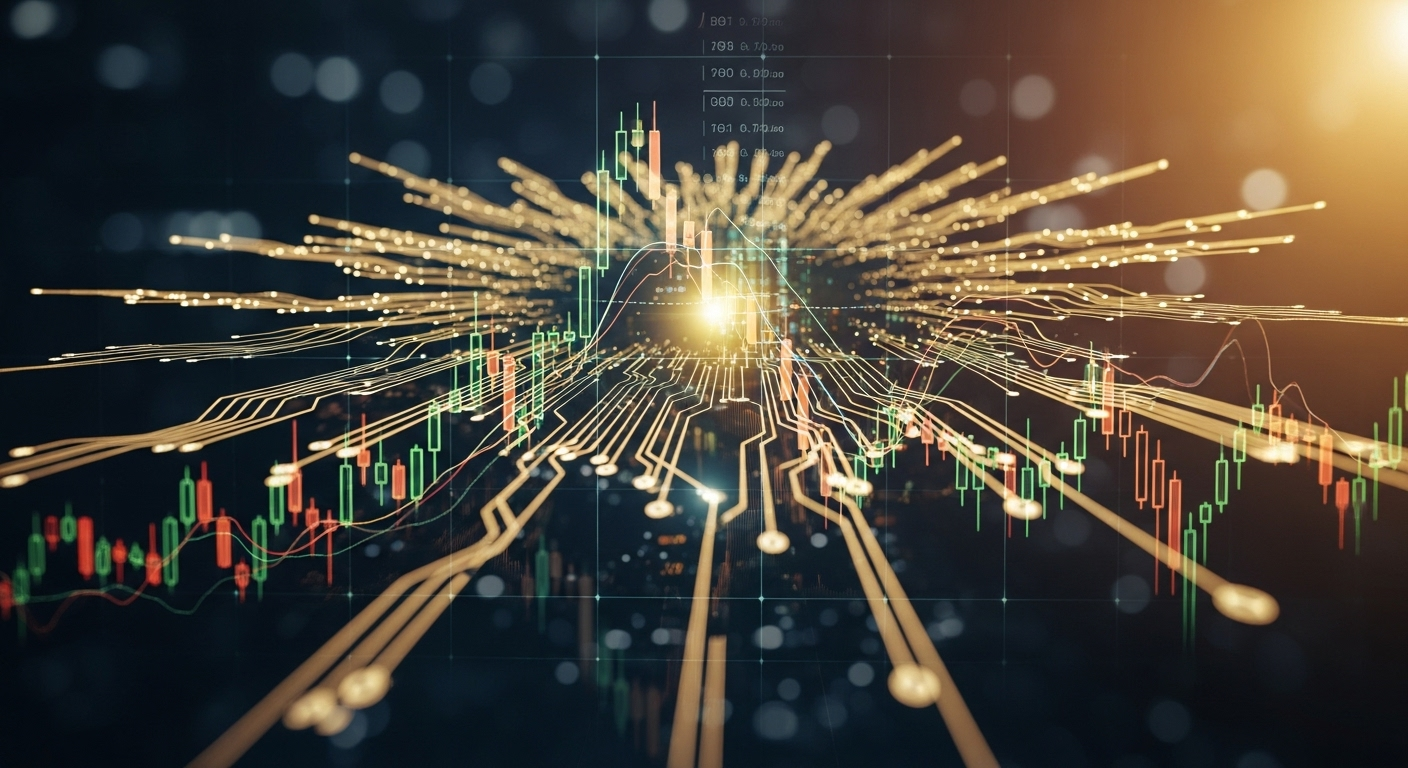Ready to transform your forex trading? Algorithmic forex trading, also known as automated trading or robot trading, is rapidly changing the landscape. By using sophisticated algorithms and computer programs, traders can automate trading decisions, execute trades faster, and potentially increase profitability. This guide offers a comprehensive overview of algorithmic forex trading, its benefits, and how to get started.
Join the revolution and discover how algorithmic trading can elevate your forex game! We’ll explore selecting the right algorithm, managing risk, and building your own system. Let’s dive in!
Jump To Section:
- Introduction to Algorithmic Forex Trading
- Benefits of Algorithmic Forex Trading
- Choosing the Right Forex Algorithm
- Backtesting Algorithms for Performance
- Risk Management Strategies
- Building Your Own System
- Top Platforms for Algorithmic Trading
- Future Trends in Algorithmic Trading
- Conclusion
Introduction to Algorithmic Forex Trading
Algorithmic forex trading uses computer programs, or algorithms, to automatically execute trades based on predefined rules and strategies. These algorithms analyze market data, identify opportunities, and execute trades without human intervention. This approach offers advantages over manual trading, including increased speed, reduced emotional bias, and 24/7 trading.
With algorithmic forex trading, you can backtest strategies, optimize parameters, and automate your trading process, freeing your time and potentially improving results. It’s beneficial for both new and experienced traders.
Benefits of Algorithmic Forex Trading
Why consider using forex trading algorithms? Here are key benefits:
- Increased Speed and Efficiency: Algorithms execute trades in milliseconds, capitalizing on market opportunities.
- Reduced Emotional Bias: Automated trading eliminates emotional decision-making for more consistent results.
- 24/7 Trading: Algorithms trade around the clock, even while you sleep.
- Backtesting Capabilities: Test strategies on historical data to evaluate performance.
- Diversification: Algorithms manage multiple strategies simultaneously, diversifying risk.
These advantages make algorithmic forex trading attractive for traders seeking improved performance and efficiency.
Choosing the Right Forex Algorithm
Selecting the right forex trading algorithm is crucial. Consider these factors:
- Trading Style: Choose an algorithm aligned with your trading style and risk tolerance.
- Historical Performance: Evaluate past performance, but remember it doesn’t guarantee future success.
- Customer Reviews: Read reviews to understand the algorithm’s reliability and effectiveness.
- Support and Updates: Ensure the provider offers support and regular updates for changing markets.
- Cost: Compare algorithm costs and choose one fitting your budget.
Careful consideration helps you select an algorithm meeting your needs and trading goals.
Backtesting Algorithms for Performance
Backtesting evaluates a forex trading algorithm’s potential. It tests the algorithm on historical data to see past performance, assessing profitability, risk profile, and overall effectiveness.
When backtesting, note key metrics like win rate, profit factor, drawdown, and Sharpe ratio. Use realistic market conditions and consider slippage and commission costs. Backtesting identifies weaknesses and optimizes parameters for better performance.
Risk Management Strategies
While algorithmic forex trading offers benefits, effective risk management is essential. Here are key strategies:
- Set Stop-Loss Orders: Limit potential losses on each trade with stop-loss orders.
- Use Proper Position Sizing: Determine position size based on risk tolerance and account balance.
- Monitor Your Algorithm: Regularly monitor performance and adjust as needed.
- Diversify Strategies: Don’t rely on a single algorithm; diversify to reduce risk.
- Stay Informed: Keep up-to-date with market news impacting your algorithm’s performance.
Effective risk management protects capital and achieves long-term success in algorithmic forex trading.
Building Your Own System
If you have programming skills and understand forex trading, consider building your own algorithmic forex trading system. This involves developing strategies, coding them into algorithms, and testing them on historical data.
Building your own system requires time and effort but offers complete control and customization. You can tailor the system to your trading style and risk tolerance. Thoroughly test and optimize your system before live trading.
Top Platforms for Algorithmic Trading
Several platforms support algorithmic forex trading. Here are popular options:
- MetaTrader 4 (MT4): Widely used platform with a large community and support for custom indicators and expert advisors (EAs).
- MetaTrader 5 (MT5): The successor to MT4, offering enhanced features and capabilities.
- cTrader: Known for its advanced charting tools and order execution capabilities.
- TradingView: A popular web-based platform with charting tools and social networking features.
Choose a platform meeting your needs and offering tools and resources for success in algorithmic forex trading.
Future Trends in Algorithmic Trading
Algorithmic forex trading evolves constantly, with new technologies emerging. Key trends to watch include:
- Artificial Intelligence (AI): AI is increasingly used to develop sophisticated and adaptive trading algorithms.
- Machine Learning (ML): ML algorithms learn from data and improve performance over time.
- Cloud Computing: Cloud computing provides scalability and computing power for complex algorithms.
- Big Data: Access to large datasets enables more accurate and predictive trading models.
As these technologies advance, algorithmic forex trading will likely become more prevalent and sophisticated.
Conclusion
Algorithmic forex trading offers a way to automate trading decisions, increase efficiency, and potentially improve profitability. By understanding the benefits, risks, and key considerations, you can make informed decisions and take advantage of this trend. Whether using existing algorithms or building your own system, algorithmic forex trading can revolutionize your forex trading strategy. Embrace the future of trading and unlock new opportunities!



